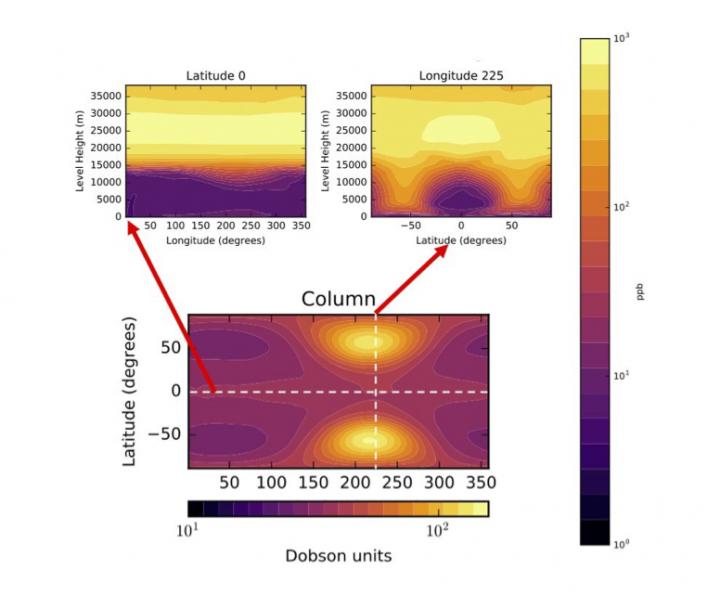Ozone chemistry on tidally locked M dwarf planets
We explore atmospheric ozone dynamics on a tidally-locked M dwarf planet, nominally Proxima Centauri b, irradiated by a quiescent version of its host star.

We explore atmospheric ozone dynamics on a tidally-locked M dwarf planet, nominally Proxima Centauri b, irradiated by a quiescent version of its host star. We show that Proxima Centauri radiates with sufficient UV energy to initiate ozone chemistry, resulting in a thin but stable ozone layer.
The quasi-stationary distribution of atmospheric ozone (see Figure showing ozone columns) is determined by photolysis driven by incoming stellar radiation and by atmospheric transport.
Ozone mole fractions are smallest in the lowest 15 km of the atmosphere at the substellar point and largest in the nightside gyres. Above 15 km the ozone distribution is dominated by an equatorial jet stream that circumnavigates the planet.
The nightside ozone distribution is dominated by two cyclonic Rossby gyres that result in localized ozone hotspots (Figure showing longitude 225 degrees). On the dayside the atmospheric lifetime is determined by the HOx catalytic cycle and deposition to the surface, with nightside lifetimes due to chemistry much longer than time-scales associated with atmospheric transport.
Surface UV values peak at the substellar point with values of 0.01 W/m2, shielded by the overlying atmospheric ozone layer but more importantly by water vapour clouds.
Link:
Ozone chemistry on tidally locked M dwarf planets, J. S. Yates, P. I. Palmer, et al., 2020, Monthly Notices of the Royal Astronomical Society, 492, 1691–1705

